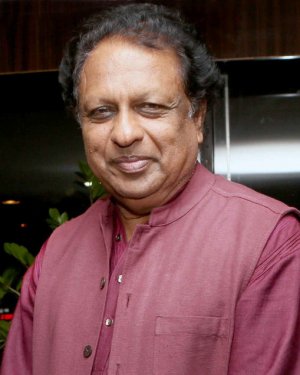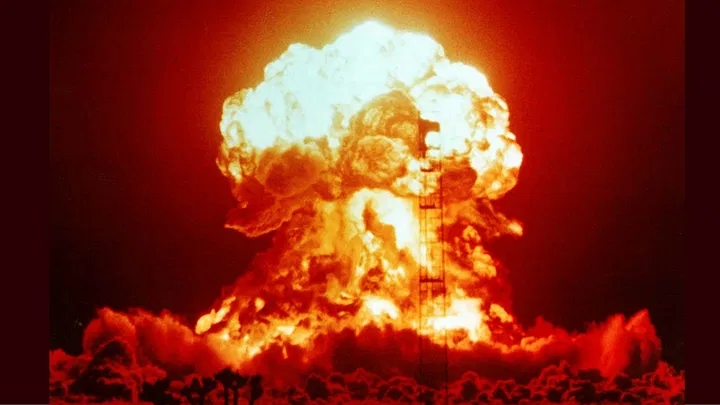
Another Anniversary of Pokhran II
Twenty-two years ago this week (May 11-13, 1998) India blasted its way into the exclusive nuclear club by testing five nuclear devices at the Indian Army’s Pokhran Test Range in Rajasthan. May 11 is observed in India as the National Technology Day as it marked the emergence of India as a “technologically advanced responsible state,” a euphemism for a nuclear state outside the NPT. The tests set off a wave of events in India-US relations and India’s nuclear policy till a closure was found in the India-US nuclear deal signed in 2008. The deal did not attain all its objectives, but brought India to the nuclear mainstream, with the possibility of nuclear trade and collaboration with several countries.
On the occasion of the anniversary, Prime minister Narendra Modi recalled the determined leadership of the then prime minister Atal Behari Vajpayee that helped the country come out of the nuclear closet. "The tests in Pokhran in 1998 also showed the difference a strong political leadership can make," PM Modi said. He also said that Vajpayee’s move had filled the country with pride and valour. Paying tributes to India’s scientific community, the Prime Minister added that the way the tests were conducted in secrecy, undetected by US satellites, was to the credit of Indian scientists.
The US was more angry about the way the secret was kept than by the tests themselves. The story goes that the Americans had given a satellite picture of some activity on the Pokhran site, which indicated the precise time when the American satellite came over Pokhran to Prime Minister Narasimha Rao, enabling the Indian team to go underground at that time. “We are going to come down on those guys like a ton of bricks,” President Bill Clinton told a meeting of his advisers in the Oval Office when the news came. The State Department officials, who met Ambassador Naresh Chandra and me, did exactly as promised by the President, accusing India of betrayal and refusing to hear the rationale of our action or the road ahead. A dialogue at a high level in Washington or Delhi was rejected and they talked of retribution rather than reconciliation.
Later, we forwarded to the President a letter from PM Vajpayee, explaining the reason for the tests. He mentioned our two neighbours; China, “an overt nuclear weapon state on our borders, which committed aggression against India in 1962” and Pakistan “a covert nuclear weapon state” as reasons for the test. This was a confidential communication, but its text appeared in the ‘New York Times’ the next day, causing complications in India-China relations. The untested Glenn Amendment sanctions were imposed in its severest form which endangered the entire spectrum of India-US relations.
The Jaswant Singh-Strobe Talbott talks, which began after about two months, the longest and the most intensive dialogue between India and the US on Nuclear and security issues lasted for two years. It did not result in any specific agreements, but it laid the basis of the India-US nuclear deal, which was signed in 2008. President Clinton went to India and PM Vajpayee visited Washington in 2000 and an understanding was reached on a new architecture for India-US relations. The sanctions were gradually eased and the relations were close to normal when President George Bush and Prime Minister Manmohan Singh came to power in the two counties and the signing of the nuclear deal in 2008 after lengthy and complex negotiations brought the issue of nuclear tests to a closure.
Looking back at the negotiations on the deal and the subsequent developments, it appears that the world has not fully accepted India’s status outside the NPT. The nuclear trade with the US, which was expected to commence soon after the deal went into cold storage on account of India’s new liability law, which placed the responsibility of damages on the supplier and not the operator. When the question of India’s admission as a member of the Nuclear Suppliers Group came, China insisted that It was not possible unless India signed the NPT as a non-nuclear weapon state.
The nuclear power scene changed dramatically after the Fukushima accident of 2011, when several countries suspended or abandoned nuclear reactors and others, who were waiting to go nuclear, turned to other sources of energy. Apart from upgrading the Russian Kudankulam reactor, India has not set up any foreign reactors, though there have been proposals for French and American reactors. Proposals to resolve the liability issue, made by PM Modi on his first visit to the US, have remained unaccepted so far.
Though President Barack Obama had envisioned a nuclear weapon free world in the distant future and old cold warriors had endorsed it, the nuclear arms race has continued between the US, China and Russia. It was thought that 9/11, Fukushima, the Iran nuclear deal and the dialogue with North Korea would alter the trajectory of the nuclear arms race, but the Doomsday Clock today is closer to Apocalypse than ever before. The Comprehensive Test Ban Treaty (CTBT) has not come into force after its adoption in 1996 and the negotiations on the Fissile Material Cut-off Treaty (FMCT) remain stalled. Arms control negotiations are at a standstill. Climate change was added as a factor in the DoomsDay Clock, but now with the addition of COVID-19, the midnight might arrive sooner than we expect. The US, China and Russia are modernising their nuclear arsenals as though a nuclear war is still possible.
Twenty-two years after the Indian nuclear tests of 1998 and the subsequent India-US nuclear deal appear more symbolic than real. The US, Russia, North Korea and Pakistan keep threatening to use nuclear weapons, but no one expects a nuclear war in any of the theatres of conflict. India has a non-first use doctrine and we have only a minimum deterrent. For energy, we shall depend more and more on indigenous reactors and renewable energy. But it is appropriate that we celebrate the anniversary as the National Technology Day to mark our exceptional accomplishments in science and technology.

